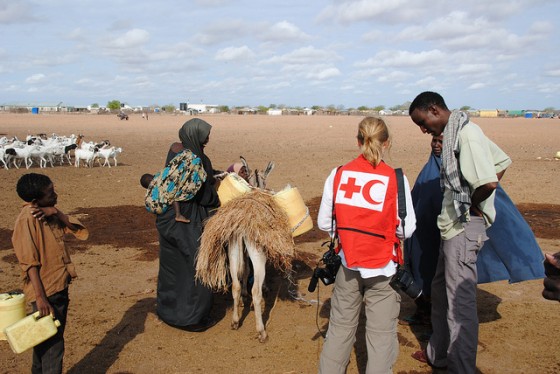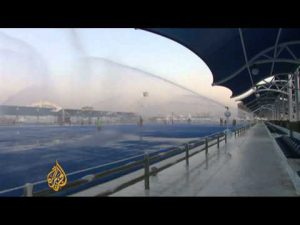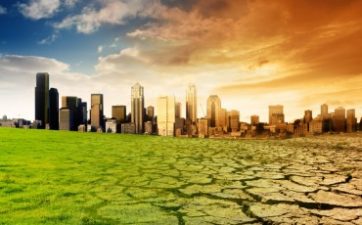 Aid workers are battling to reach certain drought-affected people in the Horn of Africa, where tens of thousands of people have died.
Aid workers are battling to reach certain drought-affected people in the Horn of Africa, where tens of thousands of people have died.
Tens of thousands of people, many of them children, have already died in Somalia – the seat of what is being called the Horn of Africa famine. While many news outlets focus on Rupert Murdoch, for whom oil shale in Israel is likely a dwindling concern by now, we really ought to have our eyes on Djibouti, Eritrea, Ethiopia, Kenya, Somalia, Sudan and South Sudan, where global warming, climate change, higher carbon concentrations, whatever you want to call one of the most serious challenges humanity has ever faced, is presently, right now, starving millions of people to death. And we should be looking because we in the Middle East could be next.
Climate change is dramatic
I know that sounds dramatic. But climate change is dramatic and will become even more so if our level of preparedness is not escalated. Today, the United Nations officially upgraded the drought, the second year in a row that the rains have failed in North Eastern Kenya and Southern Somalia, a famine.
NPR reports that “30 percent of children [are] acutely malnourished and 4 in every 10,000 [are] dying each day,” and Andrew Wander, writing for Al Jazeera, says that Save the Children have “treated thousands of drought-affected children for malnutrition in Kenya alone.”
With the next rains not expected until October, the situation is bound to get much much worse.
Wander writes,
“Whether you ask about the carcasses of livestock baked white in the sun, the gaggle of people crowding around the district commissioner’s door, or the wards of malnourished children lying listlessly in hospital beds, the explanation given is always the same. “It’s because of the drought.”
The UN has called this the worst drought in sixty years but journalists on a listserv I follow wonder about this number. Is it meteorologically the worst drought on record, or is the humanitarian tragedy that is unfolding the worst in sixty years?
What makes this the worst drought in 60 years?
Patrick Luganda, Chair of the Network of Climate Journalists in the Greater Horn of Africa (NECJOGHA) wrote this in an email that was so enlightening for the lessons it carries for the Middle East that I had to share it.
Technically the worst ‘meteorological drought’ may not necessarily be the worst drought in actual impacts on communities and the public in general. For instance the driest year on record say in a ten year period may be described and the worst drought year in meteorological terms but if the affected countries or regions are adequately warned in time, these countries may prepare to counter this dry period and less human suffering is recorded. This means that the terrible drought in humanitarian terms may not be because of the worst dry year in history but rather by the lack of preparedness by the given country or community to respond to the drought conditions.
The United States Geological Survey (USGS) linked last year’s drought in the Horn of Africa to “warm sea surface temperatures (SSTs) in the Indian Ocean,” or climate change. Although prone to drought, rainfall has become increasingly scarce in the region during the last decade.
Why people in the MENA region really ought to pay attention
The World Bank calls the Middle East “particularly vulnerable to climate change.” Last year, 500,000 Syrians evacuated a drought-stricken zone long before the Arab Crisis or Spring emerged.
We have reported time and again that temperatures are rising throughout the Gulf, the Levant, the Magreb, and the Mediterranean, food prices are rising and agriculture is becoming less secure. The UAE and Saudi Arabia are buying up land while they can, but countries in the Middle East and North Africa need to stop looking beyond their borders for answers and start fortifying their own societies.
:: Al Jazeera
More on Drought and Famine in the Middle East:
500,000 Syrians Flee Drought-Stricken Zone
Drip Irrigation Gives Hope to Drought-Plagued Syrian Farmers
Yemen’s Water Crisis Could Worsen Security
image via Canadian Red Cross



It’s hard to definitively link events such as the East Africa drought to climate change scientifically. However, it would be stupid of us not to accept that humans have changed the environment – and that has implications. We have to more actively combat climate change before droughts like these become more commonplace and even more deadly.